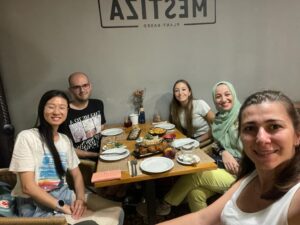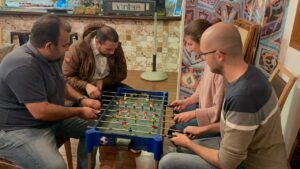Diagnostics and prognostics are not alike. While diagnostics are certainly visually present on the slides, it is unknown whether key prognostic features are
The main objective of this secondment was to develop a deep learning-based algorithm that predicts whether a patient will respond positively to Bacillus Calmette-Guérin (BCG) treatment based on features extracted from WSI and clinicopathological reports. Currently, intravesical BCG is the gold standard adjuvant therapy for NMIBC at a high risk of progression. BCG failure leads to a high percentage of patients not to effectively respond to treatment, thus resulting in recurrence or progression. Although BCG response ground truth comes from retrospective studies, efficient treatment guidelines would highly benefit from discerning patients who respond to BCG to those that do not, at the first transurethral resection of a bladder tumour (TURBT). Identifying possible non-responders at the first stage would significantly reduce the mortality rate and treatment cost, hence contributing to more adequate patient-based treatment strategies.
In order to solve this problem, we have collected several WSI of high-risk non-muscle invasive bladder cancer (HR-NMIBC) from the first TURBT from a multi-centre cohort provided by Erasmus MC, Rotterdam, The Netherlands. We also have a large spread sheet containing a detailed report of clinicopathological information per WSI. These variables gather info about number of BCG instillations, responsiveness, among others.
Clinical jargon aside, although the aim was to develop a clinical prognostic application, what I valued the secondment at UPV for is on technological aspect. The CVBLab at UPV has a lot of talented PhDs working on the field of computational pathology, which have given me a lot of insight into frameworks, methodologies, pipelines, among others. It was satisfying for me to have others that work on the same research field and experience the same obstacles as I do. Taking advice and guidance from others, I could develop and try different approaches for the BCG treatment application. Diagnostics and prognostics are not alike. While diagnostics are certainly visually present on the slides, it is unknown whether key prognostic features are. Ultimately, we want to find out if there is enough relevant features in the slides for predicting future treatment outcomes. This particular application has proven to be ambitious, and, even if the application is not ready yet, I progressed significantly while I was there.
Other than that, I was lucky to be in Valencia while other ESRs were also seconded in other institutions in the city. We had the opportunity to share memories, which I am very fond of.
All in all, it has been a truly fruitful stay.
Photos with other ESRs during my secondment in Valencia.
Saul Fuster Navarro – ESR5.



